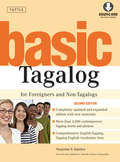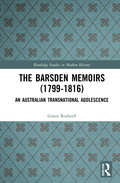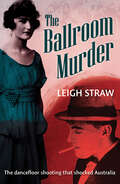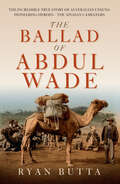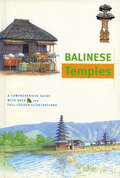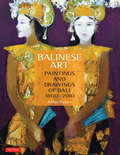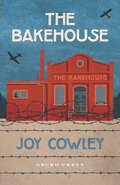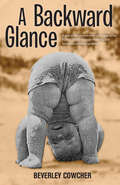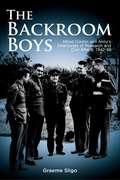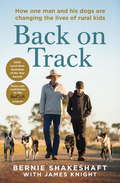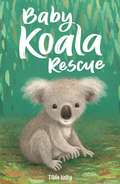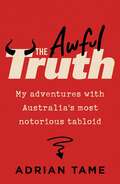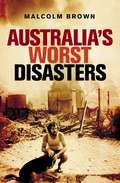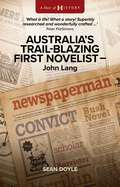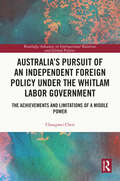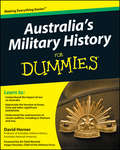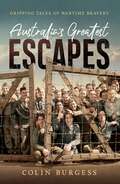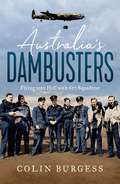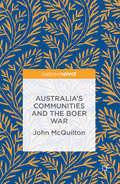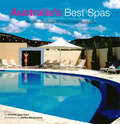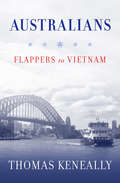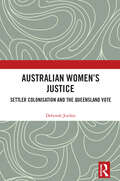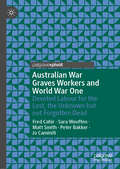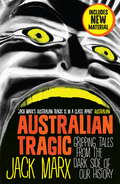- Table View
- List View
Basic Tagalog
by Paraluman S. AspilleraBasic Tagalog takes a friendly and innovative approach, emphasizing the structure of the Tagalog language rather than just vocabulary. This user-friendly Tagalog textbook teaches more than 2,000 Tagalog words and expressions with over 500 being added for this new edition. These are spread throughout 44 lessons, the Appendices and the exercises as well as in the Tagalog-English and English-Tagalog vocabulary lists at back of the book. The added Tagalog vocabulary is meant to keep learners abreast of changes that have occurred in the language since the first edition of Basic Tagalog which was published. This edition has retained all the grammar lessons and the tried-and-tested teaching methodology developed b the author, Paraluman S. Aspillera, for the original version. Her method has proven to be extremely effective for tens of thousands of foreigners and non-Tagalogs who have used this book to lean to learn Tagalog, including many who have successfully learned to speak Tagalog, read Tagalog and write Tagalog through self-study on their own without a teacher. An audio CD has also been added to facilitate the correct pronunciation of Tagalog words and phrases. A succinct introduction to the language and a description of the character of Filipinos will hopefully provide learners with a better understanding of the language they are learning. The lessons in Basic Tagalog are intended for a three-month period of intensive study followed by another three months of applied oral communication. In six months (or about 250 hours), it is expected that an average learner should be able to speak, write and understand simple, everyday, conversational Tagalog as spoken by most Filipinos. Highlights of this book include: Over 2,000 Tagalog words and expressions. 44 lessons organized by organized for efficient language absorption. Extensive exercises and activities to reinforce the lessons. Vocabulary lists serve as comprehensive English-Tagalog and Tagalog-English dictionaries. Completely updated and expanded with new materials. Includes accompanying MP3 Audio CD. Using Basic Tagalog to study the Tagalog language will further encourage both non-Tagalogs and non-Filipinos to speak Tagalog better. Only then will they appreciate the individuality of the language that reflects the resilience and flexibility of Filipinos all around the world. In the end, such learning will improve daily interactions and communications between non-Filipinos and Filipinos-whether in business, education, tourism, social or civic endeavors.
The Barsden Memoirs: An Australian Transnational Adolescence (Routledge Studies in Modern History)
by Grant RodwellCovering the life of Josephus Henry Barsden from his birth in 1799 through his childhood to 16 years of age, the Barsden memoirs describe events from a Sussex smugglers’ inn, a convict ship to the colony of New South Wales, sealing and whaling expeditions to Van Diemen’s Land, and Barsden’s participation in a Tahitian civil war. The author assesses the value of memoirs, and of these memoirs in particular to students of history in respect to the transnational paradigm. He tests the historicity and veracity of their contents, and provides an engaging exegesis and graphical supplement of its contents. Of central importance is Barsden’s account of the Battle of Fe’i Pi, which was in many respects the Pacific’s equivalent to the contemporaneous Battle of Waterloo, such was its lasting impact on Pacific geopolitics. This was no ordinary childhood, and poses many questions about a transnational adolescent’s impact on major events. A fascinating read for scholars and students of Australian, Pacific, and British Colonial History, written with academic rigour but accessible to non-specialists.
The Ballroom Murder
by Leigh StrawIn August 1925, Audrey Jacob shot dead her former fiancé, Cyril Gidley, in full view of hundreds of guests at a charity ball in Perth's Government House. When she was arrested, she still held the gun in her hand. It was a open and shut case of wilful murder – that is until Jacob assigned prosecutor Arthur Haynes to her defence. His ability to play the press and the jury for sympathy would lead to a sensational result. Not only did Jacob escape the gallows, she was found not guilty of Gidley's murder. Straw, the author of a number of books about notable Australian female criminals, tells a story that is rich with first-hand newspaper accounts from the day.
The Ballad of Abdul Wade: The Incredible True Story of Australia's unsung Pioneering Heroes - The Afghan Camelleers
by Ryan ButtaWhen Afghan entrepreneur Abdul Wade first brought his camel trains to the outback, he was hailed as a hero. Horses couldn't access many remote settlements, especially those stricken by flood or drought, and camel trains rode to the rescue time and time again.But with success came fierce opposition fuelled by prejudice. The camel was not even classed as an animal under Australian law, and, in a climate of colonial misinformation, hyperbole and fear, camel drivers like Wade were shown almost as little respect. Yet all the while, for those in need, the ships of the desert continued to appear on the outback horizon.After his interest was piqued by a nineteenth-century photo of a camel train in a country town, Ryan Butta found himself on the trail of Australia's earliest Afghan camel drivers. Separating the bulldust from the bush poetry, he reveals the breadth and depth of white Australian protectionism and prejudice. Told with flair and authority, this gritty alternative history defies the standard horse-powered folklore to reveal the untold debt this country owes to the humble dromedary, its drivers and those who brought them here.
Balinese Temples
by Julian Davison Bruce GranquistBali is an island with literally tens of thousands of temples, a proliferation of religious architecture probably not equaled anywhere else in the world.This book is intended as a general introduction to the architectural symbolism of the typical Balinese temple and the cosmological significance of its layout. The informative text is complemented by dozens of watercolor illustrations and will provide a useful guide to many of the temples that the reader is likely to visit during a stay on the island.
Balinese Art
by Adrian Vickers[Balinese Art is the first comprehensive survey of Balinese painting from its origins in the traditional Balinese village to its present position at the forefront of the high-priced Asian art scene.] Balinese art has been popular and widely collected around the world for many decades. In fact, the contemporary painter who commands the highest prices in Southeast Asia's hot art market is not Chinese but Bali-born Nyoman Masriadi (1973-)-and this book demonstrates that his work draws on a long and deeply-rooted tradition.[This book surveys the art scene in Bali for the past two hundred years. The author shows how Balinese painting has deep local roots and has followed its own distinctive trajectory, yet has been heavily influenced by outsiders.] Indian artistic and religious traditions were introduced to Bali over a thousand years ago through the prism of ancient Javanese culture. Balinese artists and craftsmen have also interacted with other Asian artists, particularly those of China, and later Western artists. From these sources, an aesthetic tradition developed that depicts stories from the ancient Indian epics as well as themes from Javanese mythology and the religious and communal life of the Balinese themselves.Starting with a discussion of the island's aesthetic traditions and how Balinese art should be viewed and understood, this book goes on to present pre-colonial painting traditions, some of which are still practiced in the village of Kamasan-the home of "classical" Balinese art. However, the main focus is the development of new styles starting in the 1930s and how these gradually evolved in response to the tourist industry that has come to dominate the island. [Balinese Art acquaints readers with the masterpieces and master artists of Bali, and the final chapter presents the most important artists who are active today and serves as an introduction to their work.]
The Bakehouse
by Joy CowleyBert wants nothing more than to be old enough to fight in the war—to handle weapons, defend his country, and have a life filled with adventure. Little does he know that the secrets and danger of war don't always stay at the front line, and that one boy's actions can change everything.
A Backward Glance
by Beverley CowcherA beautiful and gentle story of a branch of the Mainland family, beginning with their early years in Australia. After establishing their roots in country Victoria, the family migrated to the farming community of Narrogin, in Western Australia, and finally lived in Dunsborough and Busselton, which were very different then from the towns we know today.A story of love, laughter, and sadness told with humour and self-deprecation as it journeys through a family's history. Full of unsung heroes and real people doing everything they can to make life wonderful for their families and children, while contributing as much as they could to the fabric of the communities they were living in.This is a story that will make you laugh and cry, and will leave you feeling better about the world.
The Backroom Boys: Alfred Conlon and Army's Directorate of Research and Civil Affairs,1942-46
by Graeme SligoThe Backroom Boys is the remarkable, but little known, story of how a varied group of talented intellectuals, drafted into the Australian Army in the dark days of 1942, provided high-level policy advice to Australia’s most senior soldier, General Blamey, and through him to the Government for the remainder of the war and beyond. This band of academics, lawyers and New Guinea patrol officers formed a unique military unit, the Directorate of Research and Civil Affairs, under the command of an eccentric and masterful string-puller, Alf Conlon. The Directorate has been depicted as a haven for underemployed poets or meddlesome soldier-politicians. Based on wide-ranging research, this book reveals a fuller and more fascinating picture. The fierce conflicts in the wartime bureaucracy between public servants and soldiers, in which the Directorate provided critical support to Blamey, went to the heart of military command, accountability and the profession of arms. The Directorate was a pioneer in developing approaches to military government in areas liberated by the combat troops, as demonstrated by the Australian Army in New Guinea, and Borneo in 1945-46. It is an issue of enduring importance. The Directorate established the Australian School of Pacific Administration, and had an important role in founding the Australian National University. Its influence extended into post war Australia. The Backroom Boys emphasises the personality of Colonel Alf Conlon, as well as the talented men and women he recruited. Above all, this book shows how, unexpectedly, the Australian Army fostered a group of men and women who made a lasting contribution to the development of Australia in the decades after the war.
Back on Track: How one man and his dogs are changing the lives of rural kids
by James Knight Bernie ShakeshaftAs a kid, Bernie Shakeshaft's mischievous and reckless behaviour led him to became known as the wild one of his devout Catholic family. It isn't surprising that his path led him to the Northern Territory, a place where people often go to either lose themselves or find themselves. Bernie, a searcher for his purpose in life, found himself.He had many jobs, firstly as a ringer on a cattle station owned by the Packer family, and later as a dingo trapper for the Parks and Wildlife Service. Throughout it all, he drank, he swore, he fought, and took chances with his own well-being. But, crucially, he also developed deep connections with the Indigenous people, and it was these connections that helped lay the foundations for what was to come. He worked for youth welfare organisations, and all the while he built up his knowledge about helping wayward youths, particularly those from Indigenous communities.Years later, Bernie was living in Armidale. He'd been visiting too many kids in prison and going to too many funerals. The usual methods weren't working so that reckless, mischievous kid inside him decided he could do better. He started a youth program called BackTrack, with three aims: To keep them alive, out of jail and chasing their hopes and dreams. For most, this was their last chance. Combining life skills, education, job preparedness with rural work, Bernie threw in one other factor: dogs! And it works. With the help of these working dogs, the lost boys (and girls) find their way back on track. These days, Backtrack youth tour the country competing in dog-jumping trials. Bernie and the BackTrack team are now supporting other communities in Lake Cargelligo, Broken Hill, Dubbo and Grafton and have forged a new beginning for over 1000 young people. This one man is making a huge difference.In Back on Track, bestselling author James Knight tells Bernie's story and the stories of those whose lives he has saved. It is a powerful reminder that we should never give up on our kids.'This fella Bernie, he's a good fella, a bit of a genius really. What a great story.' - Russell Crowe
Baby Animal Friends: Book 2 (Baby Animal Friends #2)
by Tilda KellyA tragic bush fire sparks a beautiful friendship between a young girl and a baby koala. Ruby is dreading changing schools as her autism makes it hard to befriend other kids. But when her dog finds a baby koala and her family agrees to foster it, Ruby quickly becomes the koala's best friend. Ruby loves quiet and routine, which makes her a perfect koala carer! A talented artist, she names the koala Pablo - after her favourite artist. Through looking after Pablo, Ruby befriends a neighbouring girl who loves painting as much as she does. Soon Pablo is well enough to move to a koala kindergarten. But is Ruby ready to move to her own new school?
The Awful Truth: My adventures with Australia's most notorious tabloid
by Adrian TameBefore Fake News, there was the real Fake News. There was Truth. Hailed as &‘a fearless exposer of folly, vice and crime&’ when it first hit the streets in the 1890s, Truth was later condemned by a High Court Judge as &‘a wretched little paper, reeking of filth, injurious to the health of house servants and young girls&’. Much later it earned the nickname &‘The Old Whore of La Trobe Street&’. Truth was called many things but it was never boring. Adrian Tame knows that better than anyone as he worked for Truth for more than a decade as a reporter and news editor. In the years it was owned by the Murdoch family he worked alongside young Rupert as he cut his teeth on the shock horror scandals that graced the pages of Truth when it was selling a whopping 400,000 copies a week. Funny, often outrageous and always thoroughly entertaining, The Awful Truth is a rollercoaster ride through an colourful era of newspapers and larger-than-life reporters that we will never see the like of again.
Australia's Worst Disasters
by Malcolm BrownGraphic accounts of Australia?s worst disasters ? historical as well as events of recent years.From the Ash Wednesday bushfires of 1983 to the implosion of the Royal Canberra Hospital in 1997, and from the shocking Granville railway crash in 1977 to the Sea King helicopter crash of 2005, Australia's history has been punctuated by incidents of disaster and tragedy that have shocked us all. Sometimes warning signs were not read (or were ignored); sometimes human error was to blame. These graphic and compelling accounts by veteran Sydney Morning Herald journalist Malcolm Brown and other award-winning journalists tell us far more than simply what happened - they provide unique insights into the impact of these events on the lives of innocent people. And, interspersed with stories of death and destruction, are heart-warming accounts of courage, grace and just plain good luck.
Australia's Trail-Blazing First Novelist: John Lang
by Sean Doyle'Writer, journalist, barrister, larrikin' Who was the first Australian novelist? John Lang, born in a Parramatta pub in 1816 with the convict &‘stain&’ upon him, was a singular character. The first native-born person to have a novel published, he was also a newspaperman, a classical scholar and translator, barrister, celebrity, jailbird … enigma. He was hugely energetic, capable and original, but he also had his demons. A larrikin polymath who refused to be bound by convention, Lang didn&’t just want his allotted portion – he wanted all of it. He got a lot of it, too, but not the chalice of immortality. Lang was a serial pioneer. In literature, he also wrote the first &‘detective novel&’ in English, the first convict-system satire, the first Indian travelogue by an Australian, and he created the template for the bush novel. In journalism, he was the first Australian to launch and run a newspaper overseas. And in law, he was the only barrister to ever defeat the mighty East India Company in an Indian courtroom. So why have we never heard of him? This long-overdue biography explores answers to this revealing question as it tracks Lang&’s rise from those humble beginnings to fortune and fleeting fame. Author Sean Doyle tells the riveting story of Lang&’s remarkable life and times across three continents in the age of Empire, when the modern world was young …
Australia’s Pursuit of an Independent Foreign Policy under the Whitlam Labor Government: The Achievements and Limitations of a Middle Power (Routledge Advances in International Relations and Global Politics)
by Changwei ChenThe election of the Whitlam-led Labor government in December 1972 ushered in fresh ideas and audacious initiatives in Australia’s foreign policy. Whitlam’s approach was shaped by a vision of taking Australia forward to its "rightful" and "independent" place in the future of the Asia Pacific region. Examining a series of episodes in Australia’s foreign relations under Whitlam, Chen pays attention to a broad range of hitherto insufficiently researched domestic and international issues in Australian’s foreign relations of the early 1970s. They range from immigration policy and the abolition of appeals from Australian Courts to the Privy Council to such major international issues as the Anglo-American base in Diego Garcia, French nuclear testing in the Pacific and the Five Power Agreement with respect to Malaysia and Singapore. Chen demonstrates how the pursuit of foreign policy independence repeatedly placed the Whitlam Government in a position wedged in between Australia’s traditional allies and the Third World; and how it navigated Australia’s national interests on a series of dilemma situations involving conflicting strategic interests between Australia and its traditional allies, and those between major powers and the non-aligned countries. The analysis presented in this book contributes to not only historical literature on the subject but also to the understanding of how a middle power, like Australia, can navigate intensifying great power rivalry. Essential reading for scholars of Australian foreign policy, as well as being an invaluable case study of Middle Power diplomacy in the Asia Pacific region.
Australia's Military History For Dummies (For Dummies Ser.)
by David HornerCreated especially for the Australian customer! The simple and easy way to get your mind around Australia's military history More people are visiting Gallipoli and walking the Kokoda Trail each year — now find out why. This complete guide helps you trace the story of Australia's involvement in war, from the colonial conflicts with the Indigenous population, through the World Wars to peacekeeping initiatives in East Timor and the controversial conflict in Afghanistan. Find out the origins of Australia's military history — go all the way back to the arrival of the First Fleet and the conflicts with the Indigenous peoples Learn about the heroism of the Anzacs — discover the origins of the legend of Gallipoli, and how the brass bungled the campaign Discover the horrors of war — consider the suffering and huge losses on the Western Front Recognise the successful battles of World Wars I and II — follow the Diggers' exploits in Palestine and Syria, and at Tobruk and Alamein Marvel at the grim jungle battles — track the Diggersthrough New Guinea, Borneo, Malaya and Vietnam between 1942 and 1972 Admire Australia's efforts to repel possible invaders — learn how Australians defended their country against the Japanese during World War II See how the Cold War heated up — witness the fight against communism in the Korean and Vietnam Wars Appreciate the modern-day Australian Defence Force — acknowledge the courage of the men and women who protectus into the 21st century Open the book and find: New insights into the meaning of Anzac Day Simple explanations of the structure of Australia's military Details of who fought whom, where, when and why Stories of Australia's great military fighters and leaders Accounts of the iconic battles that established Australia's reputation Locations of Australia's peacekeeping operations around the world Ways in which war and conflict have shaped the nation Reasons why Australia goes to war Learn to: Comprehend the impact of waron Australia Appreciate the heroism at AnzacCove and other significant battlefields Understand the controversies ofrecent conflicts, including in Vietnam and Iraq
Australia's Greatest Escapes: Gripping tales of wartime bravery
by Colin BurgessAustralia's greatest escape stories from two world wars Australia&’s Greatest Escapes is a collection of stories about the most hazardous aspect of the prisoner of war experience – escape. Here is all the adventure, suspense and courage of ordinary Australians who defied their captors; men who tunnelled to freedom, crawled through stinking drains, or clawed a passage beneath barbed wire in a desperate attempt to flee captivity. They were willing to risk the odds and even death in the loneliest war of all – the fight to be free. Each possessed in spades the noble qualities of boldness, resourcefulness, cunning, determination and mateship we have come to admire about our Australian service men and women under adversity. Featuring stories of Australian POWs from all theatres of war, including one who fled a German work camp during World War I, another involved in a mass tunnel escape from a notorious Italian camp, and an airman who brazenly attempted to steal a German fighter and fly it back to England. We also re-live the tragic saga of the Sandakan death marches in which six Australian escapers became the only survivors from 2000 POWs, and follow the perilous journeys to freedom undertaken by Australian infantrymen following the appalling massacre of their fellow soldiers on the Japanese-held island of Ambon.
Australia's Dambusters: Flying into Hell with 617 Squadron
by Colin BurgessThe story of 617 Squadron RAF, which carried out one of the most dangerous and audacious aerial bombing raids of World War II It was the evening of 16 M ay 1943 Nineteen modified Lancaster bombers from 617 Squadron RAF, under the command of youthful W ing Commander Guy Gibson, roared into the night sky from their Lincolnshire base. They were on a top-secret Bomber Command mission, codenamed Operation Chastise, now regarded as one of the most dangerous and audacious bombing raids of World War II – an attack on the formidable, well-defended dams of G ermany&’s Ruhr Valley. Slung beneath the belly of each aircraft was one of the war&’s greatest secrets – a bouncing bomb. Against the odds, and flying straight and level into the teeth of terrifying enemy f ire, they succeeded in breaching the two principal dams. Many of the 133 airmen involved that fateful night hailed from Australia, and several would be counted among the 56 who would not return to base next morning. The Dams Raid led to the men of this gallant company – often referred to as a suicide squadron – taking on even more hazardous operations in the final two years of the war. Under valorous leadership, and now armed with massive Tallboy and Grand Slam &‘earthquake&’ bombs, they obliterated vital Nazi installations, destroying such defiant targets as the heavily defended K embs Barrage and the German battleship Tirpitz, often at a terrible cost in lives. First published in 2003, this deeply researched, revised and updated edition of Australia&’s Dambusters offers a truly comprehensive account of the most famous bombing raid of the war through the words and stories of the courageous Australian airmen and others who flew on this and later perilous missions, remembered and forever immortalised as the Dambusters.
Australia's Communities and the Boer War
by John McquiltonThis book explores an Australian regional community's reaction to, and involvement with, the Boer War. It argues that after the initial year the war became an 'occasional war' in that it was assumed that the empire would triumph. But it also laid the foundations for reactions to the outbreak of the Great War in 1914. This is the first exploration of the place of the Boer War in Australian history at the community level. Indeed, even at the national level the literature is limited. It is often forgotten that, despite the claims that Australia became a federation via peaceful means, the colonies and the new nation were, in fact, at war. This study aims to bring back into focus a forgotten part of Australian and imperial history, and argues that the Australian experience of the Boer War was more than the execution of Morant and Hancock.
Australia's Best Spas
by Ashley Mackevicius Amanda Jane ClarkExotic escapes and sublime indulgences that will leave you looking and feeling your ultimate best await you in Australia's finest spas. This book presents the best quality spas in the premier locations-from Queensland's palm-fringed coast to Tasmania's wild mountain wilderness.
Australians: Flappers to Vietnam
by Thomas KeneallyThe third volume of Thomas Keneally’s history of the Australian people, Australians: Flappers to Vietnam chronicles the lives and deeds of Australians, both known and unknown, during the 20th century. Entering an age of consumerism, media, and communism, Australia underwent radical change in the hands of two less remembered prime ministers: the stoic Stanley Melbourne Bruce of the Melbourne Establishment and the humbler Irishman Jim Scullin of the Labor Party. Keneally examines the Great Crash, the rise of fascism, the reasons why Australia entered the Second World War through the massive unemployment that arrived later in the century. With a compassionate lens and rich storytelling, Flappers to Vietnam presents history in a fresh and vivid way.
Australian Women's Justice: Settler Colonisation and the Queensland Vote
by Deborah JordanThis book explores how women spearheaded the democratic suffrage campaign in colonial Queensland engaging with international debates on women’s activism, leadership, advocacy, print culture, and social movements. Australian Women's Justice provides a nuanced reading of the diversity and differences of the women’s movement in Queensland, from the time of first white colonisation, federation to World War 1 by new research on key women’s organisations: notably the Women’s Equal Franchise Association and the Women’s Peace Army. Framed through the lives of women suffrage participants, including their encounters with First Nations women, it also looks beyond microhistory to explore broader themes of the intersection of race, gender, property, war, and empire in the colonial context. Campaigns for enfranchisement and property rights and against conscription connect this story with larger international movements for women and labour, and organisations such as the League of Nations. This book will be of interest to students and researchers of Australian feminism and suffragism, as well as historians of feminist, labour, and peace movements both in Australia and internationally.
Australian War Graves Workers and World War One: Devoted Labour for the Lost, the Unknown but not Forgotten Dead
by Fred Cahir Sara Weuffen Matt Smith Peter Bakker Jo CaminitiThis book relays the largely untold story of the approximately 1,100 Australian war graves workers whose job it was to locate, identify exhume and rebury the thousands of Australian soldiers who died in Europe during the First World War. It tells the story of the men of the Australian Graves Detachment and the Australian Graves Service who worked in the period 1919 to 1922 to ensure that grieving families in Australia had a physical grave which they could mourn the loss of their loved ones. By presenting biographical vignettes of eight men who undertook this work, the book examines the mechanics of the commemoration of the Great War and extends our understanding of the individual toll this onerous task took on the workers themselves.
Australian Tragic: Gripping Tales From the Dark Side of Our History
by Jack MarxA compelling collection of tales from Australia's dark heart - of catastrophe and misfortune, intrigue and passion, betrayal and tragedy.AUSTRALIAN TRAGIC ranges across our past and our present: the heartbreaking story of the fire at Luna Park; the unstoppable opportunist who snatched innocent men and women from Palm Island to be part of P. T. Barnum's 'Greatest Show on Earth'; a world-class boxer who lost his battle with alcohol and ended up in an unmarked American grave; a man who heroically survived a war to find himself crushed and defeated by events much closer to home; and a new story - of an echo from Ned Kelly at Stringybark Creek, in our own time ... Heartbreaking and shocking, gothic and weird, these fascinating stories are all true, and told to remind us of the Australia we don't know, the one that simmers with love and hate, of hopes raised and futures dashed, unheralded and unnoticed . . . until now.
Australian Tragic: Gripping tales from the dark side of our history
by Jack MarxA compelling collection of tales from Australia's dark heart - of catastrophe and misfortune, intrigue and passion, betrayal and tragedy.AUSTRALIAN TRAGIC ranges across our past and our present: the heartbreaking story of the fire at Luna Park; the unstoppable opportunist who snatched innocent men and women from Palm Island to be part of P. T. Barnum's 'Greatest Show on Earth'; a world-class boxer who lost his battle with alcohol and ended up in an unmarked American grave; a man who heroically survived a war to find himself crushed and defeated by events much closer to home; and a new story - of an echo from Ned Kelly at Stringybark Creek, in our own time ... Heartbreaking and shocking, gothic and weird, these fascinating stories are all true, and told to remind us of the Australia we don't know, the one that simmers with love and hate, of hopes raised and futures dashed, unheralded and unnoticed . . . until now.
